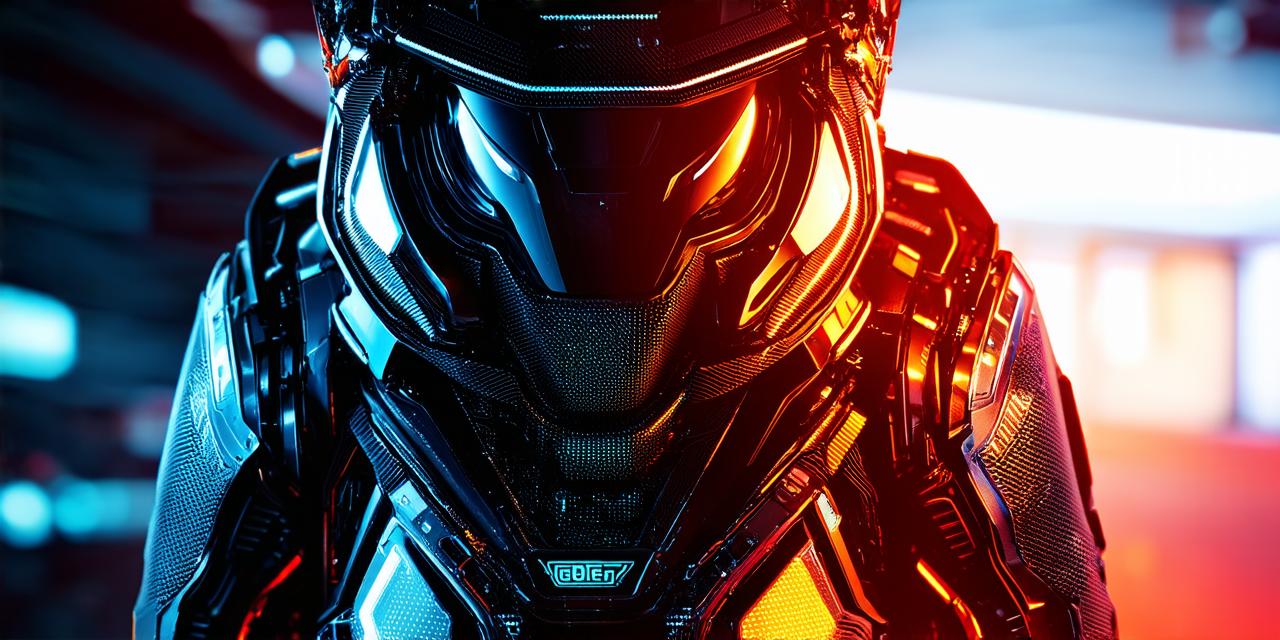New Features for Better Performance
Real-Time Ray Tracing
One of the biggest improvements in Unreal Engine 5 is the addition of real-time ray tracing. This feature allows developers to create realistic lighting effects and reflections that were previously impossible to achieve in real-time. With real-time ray tracing, you can create stunning visuals that look like they were captured from a camera, even on low-end hardware.
Real-time ray tracing works by simulating the behavior of light rays as they bounce around a scene. This allows developers to create highly realistic lighting effects, such as reflections and shadows, without sacrificing performance. By using real-time ray tracing, you can create more immersive and engaging experiences for your users.

Improved Texture Compression
Another feature that can help enhance performance in Unreal Engine 5 is improved texture compression. With this feature, developers can reduce the size of textures without sacrificing quality. This can be especially useful when working with large scenes that require a lot of texture data.
Improved texture compression works by using lossless compression algorithms to reduce the size of textures. This allows developers to store more textures in memory without sacrificing performance. By using this feature, you can reduce loading times and improve overall performance.
Virtual Texturing
Virtual texturing is another feature that can help enhance performance in Unreal Engine 5. With this feature, developers can create textures on-the-fly as needed, without having to pre-render them. This can be especially useful when working with large scenes that require a lot of texture data.
Virtual texturing works by rendering textures as needed, rather than pre-rendering them and storing them in memory. This allows developers to create more detailed and realistic environments without slowing down their project. By using this feature, you can create more immersive and engaging experiences for your users.
Real-World Examples of Unreal Engine 5 Enhancing Performance
The Matrix
One real-world example of Unreal Engine 5 enhancing performance is the new movie “The Matrix”. This movie was created using Unreal Engine 5 and features stunning visuals that were previously impossible to achieve in real-time. By using features such as real-time ray tracing, improved texture compression, and virtual texturing, the developers were able to create a highly immersive and engaging experience for audiences.
Fortnite
Another real-world example of Unreal Engine 5 enhancing performance is the popular game “Fortnite”. This game uses Unreal Engine 5 to create stunning visuals that are optimized for real-time performance. By using features such as real-time ray tracing, improved texture compression, and virtual texturing, the developers were able to create an immersive and engaging experience for players.
Autodesk’s Stargate VR Experience
Autodesk’s Stargate VR experience is another real-world example of Unreal Engine 5 enhancing performance. This virtual reality experience uses Unreal Engine 5 to create a highly detailed and realistic environment that is optimized for real-time performance. By using features such as real-time ray tracing, improved texture compression, and virtual texturing, the developers were able to create an immersive and engaging experience for users.
FAQs
1. How does Unreal Engine 5 improve performance?
Unreal Engine 5 improves performance by using features such as real-time ray tracing, improved texture compression, and virtual texturing. These features allow developers to create more realistic and engaging visuals without sacrificing performance.
2. What are some examples of how Unreal Engine 5 has been used in real-world projects?
Some examples of how Unreal Engine 5 has been used in real-world projects include “The Matrix”, “Fortnite”, and Autodesk’s Stargate VR experience. These projects use Unreal Engine 5 to create stunning visuals that are optimized for real-time performance.
3. How does improved texture compression work in Unreal Engine 5?
Improved texture compression in Unreal Engine 5 uses lossless compression algorithms to reduce the size of textures without sacrificing quality. This allows developers to store more textures in memory without slowing down their project.
4. What is virtual texturing in Unreal Engine 5?
Virtual texturing in Unreal Engine 5 allows developers to create textures on-the-fly as needed, without having to pre-render them. This can be especially useful when working with large scenes that require a lot of texture data.
5. How does real-time ray tracing work in Unreal Engine 5?
Real-time ray tracing in Unreal Engine 5 works by simulating the behavior of light rays as they bounce around a scene. This allows developers to create highly realistic lighting effects, such as reflections and shadows, without sacrificing performance.
